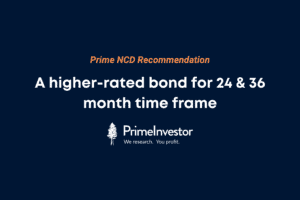Our article on the debt market outlook for 2020 outlined the following key trends in interest rates that are likely to play out in 2020.
- Having steadily slashed the repo rate all the way from 8 per cent to 5.15 per cent in the last five years, the MPC is likely to pause on rate cuts.
- If recent inflation trends or geopolitical tensions continue, the MPC could even reverse direction and raise rates in 2020.
- The tug-of-war between market forces and RBI’s Operation Twist could aggravate interest rate volatility in the short run.
- While the NBFC crisis seems to be abating, emerging stress in retail, telecom loans are factors to watch. Sporadic defaults and downgrades are likely to persist in AA and lower rated corporate bonds.
So how should debt investors in India position their portfolios to tackle these trends?
Avoid duration bets
The 10-year g-sec yield is already on its way up and is also being pulled and pushed by Operation Twist. At this juncture, taking duration risks through gilt or long-duration debt funds is unlikely to be a paying proposition for investors in debt funds in 2020. In fact, given the upward bias in rates, allocating to ultra-short bond funds and short duration bond funds seems to be the best bet. These funds can help investors capitalise on any uptrend in rates as the year progresses.
However, investors selecting these funds should take note that some of the highly rated funds in these categories do take on credit risks by investing in lower rated corporate and NBFC bonds, which can suffer downgrades. The risk-reward for investing in such funds appears unfavourable at this juncture.
Be selective on credit
If you happen to already own corporate bond or credit risk funds, you will need to tone down your return expectations from such funds in the year ahead. While corporate bond and PSU/banking funds merit a hold given that AAA spreads aren’t at rock-bottom, it may be necessary to be quite selective with your credit risk funds, as the returns you reap for taking on default/downgrade risk is lower this year than it was last year.
Given that interest rates are likely to stay volatile or even head up in the next one year, debt investors with both short term and long term money can allocate investments to the funds given below. Once rates chart a recovery from their current low levels, they may find better deployment opportunities in corporate bond or credit risk funds with a 3 year plus maturity.
| Scheme | Comment |
|---|---|
| Aditya Birla SL Floating Rate | Can adjust quickly to volatile interest rate movements. |
| Franklin India Savings | Low-risk option compared with sister fund FT Ultra Short Bond |
| Kotak Money Market | To benefit if rate hikes happen as money market coupons go up faster in rising rate scenario |
| Axis Banking & PSU Debt | High quality credit with opportunity to take some duration calls. Needs at least a 2-3 year holding |
| HDFC Corporate Bond | High quality credit with opportunity to play limited duration. Needs at least a 3-year time frame |
What to do with deposits
For safety-seeking investors who would like to avoid any market-related volatility, a compromise on returns is today inevitable. Interest rates on deposits with leading banks are at rock-bottom levels of 6-7 per cent, while the AAA rated NBFCs offer no more than 7-7.2 per cent.
- If you’re investing in deposits avoid locking in for over one year as you may get opportunities to lock-in at higher rates. On corporate and NBFC deposits, the risk-reward is not very favourable right now, given that moderate risk NBFCs (Sundaram Finance/HDFC) offer just 7-7.2 per cent on 1-year terms and 7.25-7.5 per cent for 2-3 year terms.
- For investors seeking higher returns, small savings schemes from India Post offer by far the best bet. This is especially so, after the Government has retained high rates on these instruments for the January to March 2020 quarter.
- For regular income seeking investors, given the sovereign guarantee, the 6.9 per cent offered by the National Savings Time Deposits (1-3 years) is quite attractive.
- For senior citizens, it does not make any sense to explore other options before maximising one’s deployment in the post office Senior Citizens Savings Scheme and the PM Vaya Vandana Yojana which continue to offer mouth-watering rates. SCSS is offering 8.6 per cent with a five-year lock in period and the Vaya Vandana Yojana offers 8 per cent with a 10-year lock in. Given their unique combination of high safety with high rates, these schemes are worth locking into despite the interest rate outlook.





8 thoughts on “Prime Strategy for Debt market 2020”
Nice article. Would have been much better if the Tax part of the return is also covered
Thank you will try and cover it separately.
Debt funds as an alternative to FD ????
Please explain
Their returns are far more volatile and you can even lose capital in riskier funds, but you pay low tax on returns if you use SWP for regular returns.
Hi mam,
What would you suggest for parking company treasury funds..(funds may be redeemed at any point ) Liquid/ Ultra short/ arbitrage?
Its better to go for arbitrage or liquid funds. Arbitrage funds are more tax-efficient. Ultra short funds can carry credit risk and need careful selection. We suggest you use Prime Funds to choose the best option from the arbitrage/overnight/liquid categories, this will enable you to compare returns too.
Hi Aarati,
Clear and crisp article. Indeed should be useful for all who are interested in Debt products.
Thanks,
Prakash
Thanks Prakash.
Comments are closed.